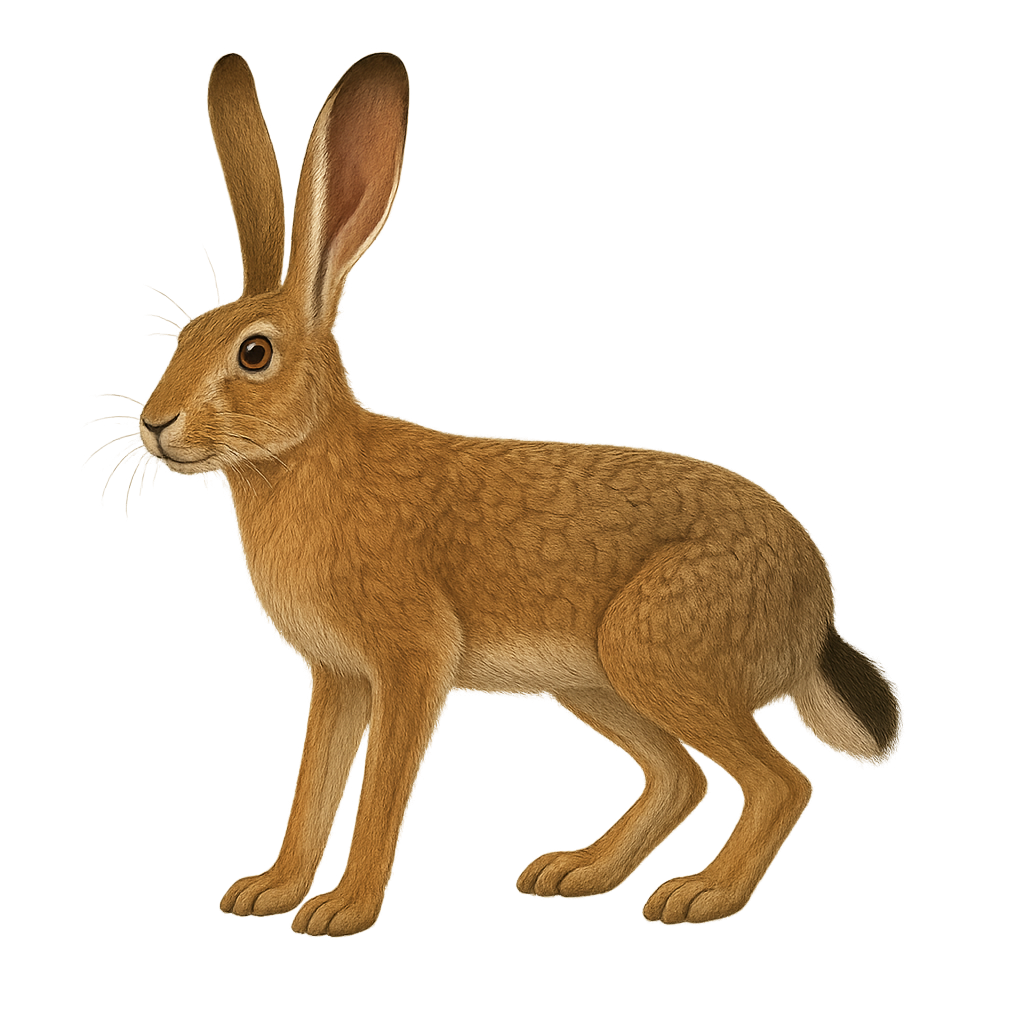Observe and photograph a species in its natural habitat
Learn where and when to observe a species in the wild, how to recognize it in the field, and what habitats it lives in. Get photography tips adapted to its behavior and capture stunning images without disturbing the animal. For full details, open the complete profile in the WildlifePhotographer app.
Cape Hare
Scientific name: Lepus capensis

IUCN Status: Least Concern
Family: LEPORIDAE
Group: Mammals
Shyness: Suspicious
Safe distance: 30 m
Breeding season / Courtship: 15.07-15.08
Gestation: 42 jours
Births: 15.08-15.10
Habitat:
Arid zones and open savannas
Description:
The Cape Hare is a large herbivorous mammal native to sub-Saharan Africa, particularly found in open areas, savannas, and semi-arid regions. It measures between 50 and 70 cm in length, with a tail of 10 to 12 cm, and weighs between 2 and 4 kg. Its coat is generally light brown or gray with a lighter belly, allowing it to blend effectively into its environment. The Cape Hare is a nocturnal and crepuscular animal, primarily feeding on plants, grasses, fruits, and roots. While it is a fast runner, reaching speeds of 50 to 60 km/h, it prefers discretion and often remains hidden during the day in bushes or tall grasses. This hare is also known for its ability to remain motionless and quickly adapt to its surroundings, making it difficult for predators to spot. While the species is relatively common, it can be threatened by habitat loss and hunting.
Recommended lens:
>=400 mm
Photography tips:
Approach discreetly and slowly, as African hares are often alert and may flee quickly at the slightest disturbance.
Photograph early in the morning or late in the afternoon, when the light is soft and the hares are more active.
Be patient: Hares often spend time feeding or resting, so wait for a moment when they move or interact with their surroundings.
Capture moments of movement: Hares are fast and can be photographed when they run or change direction suddenly.
The African Hare is not currently at risk, but it is important not to disturb this vulnerable animal during its resting or foraging times. Be sure to respect its space and natural habitat, and follow local rules to avoid causing stress.
Ready to take action?
Choose your platform and start your free trial today



